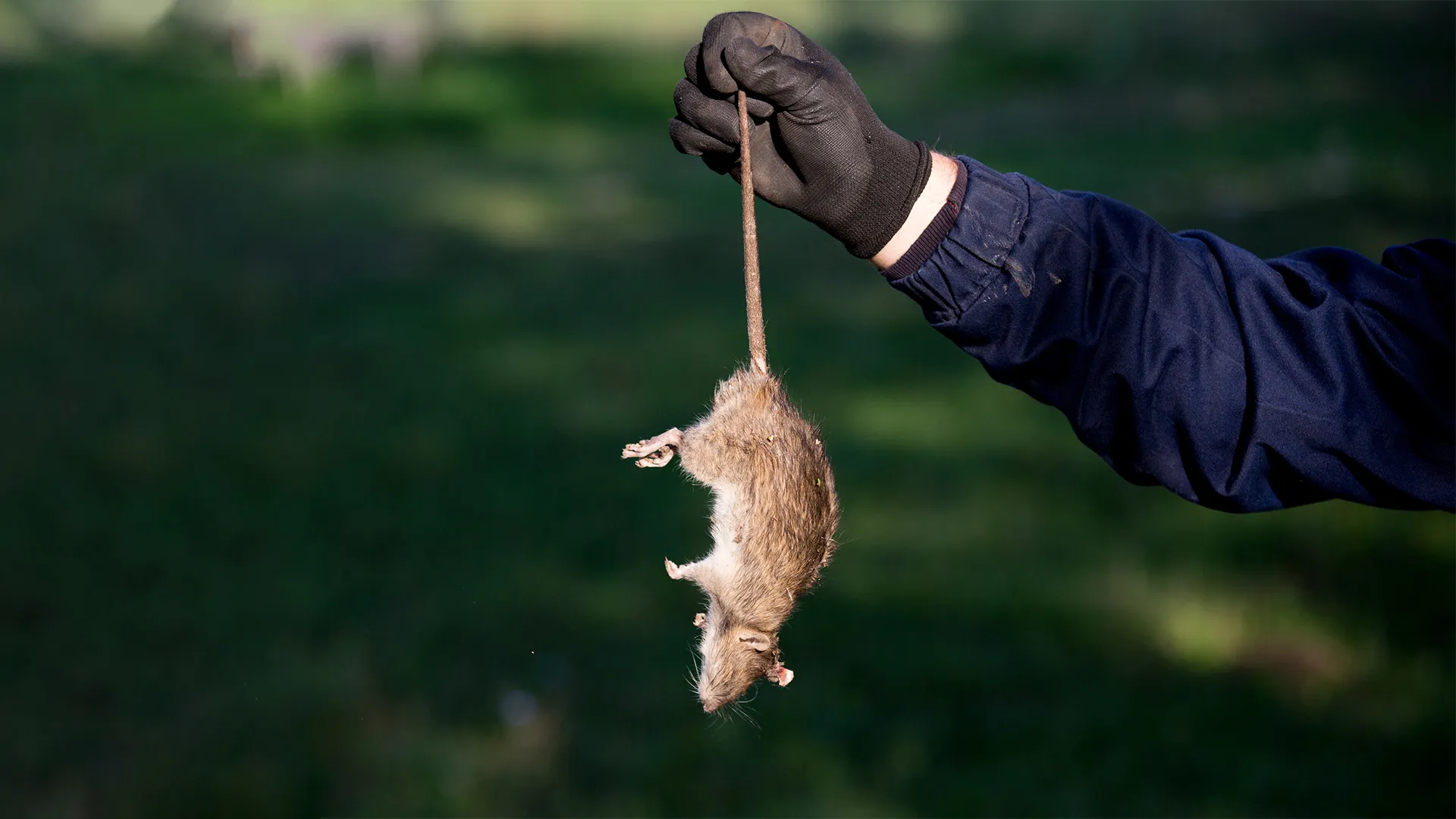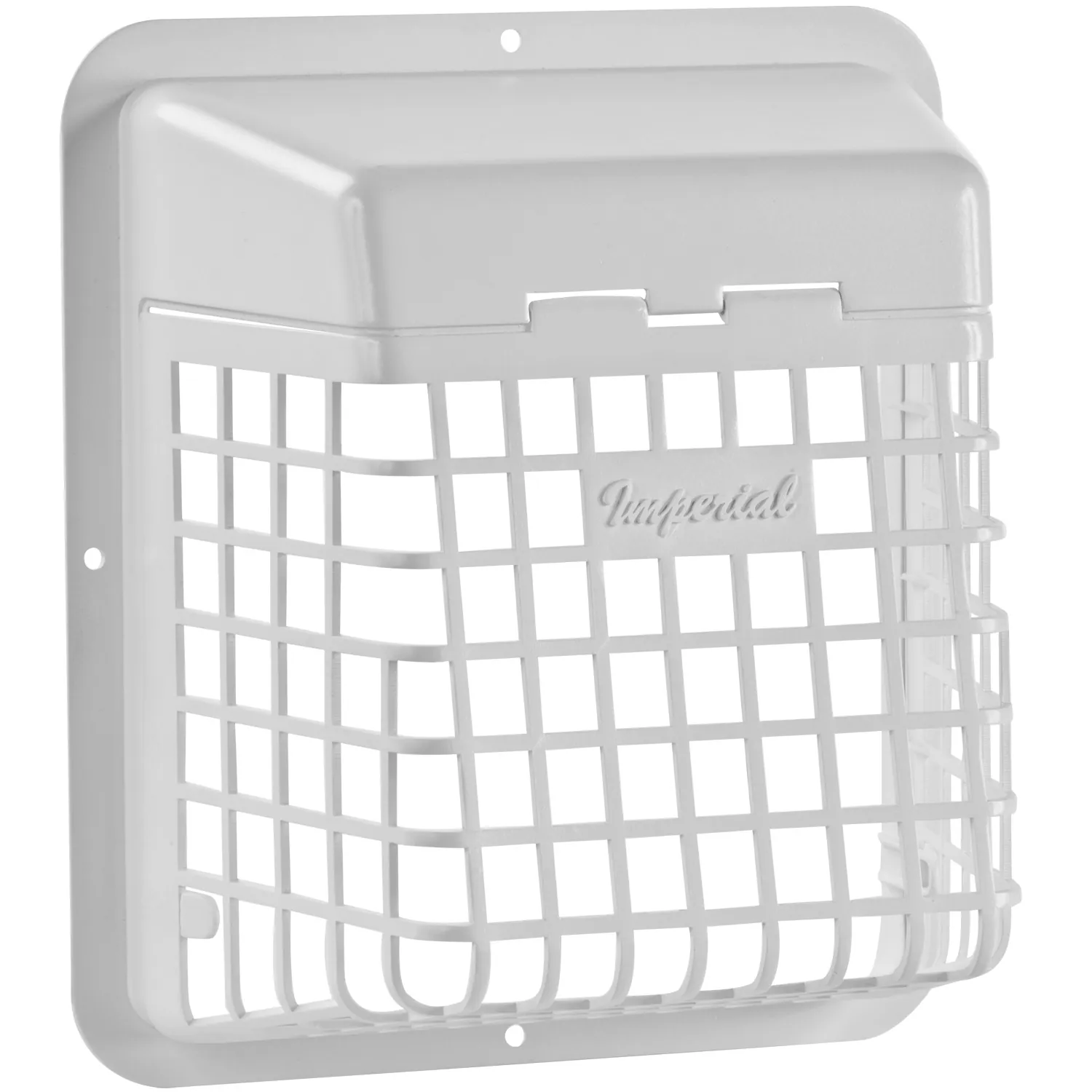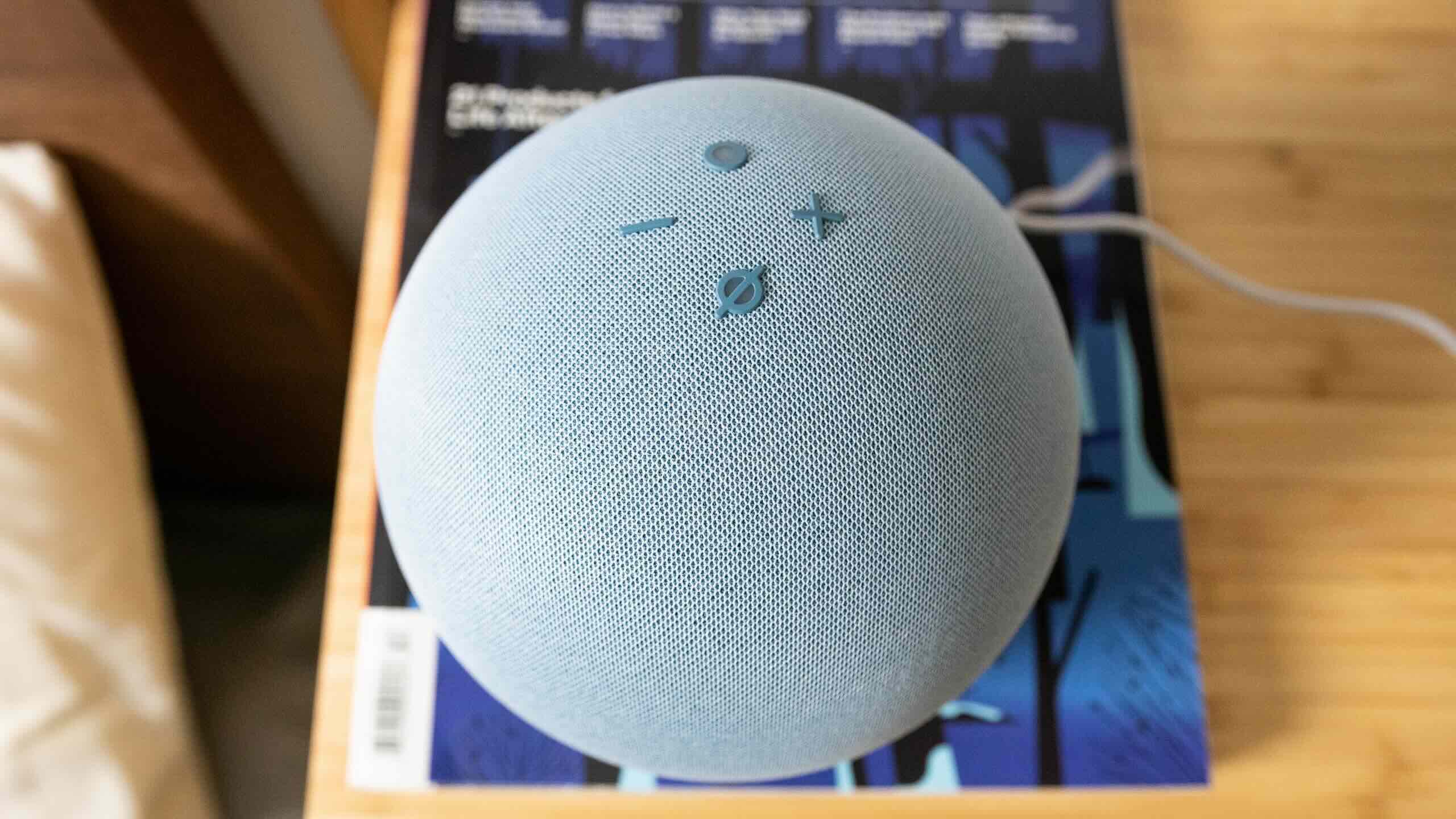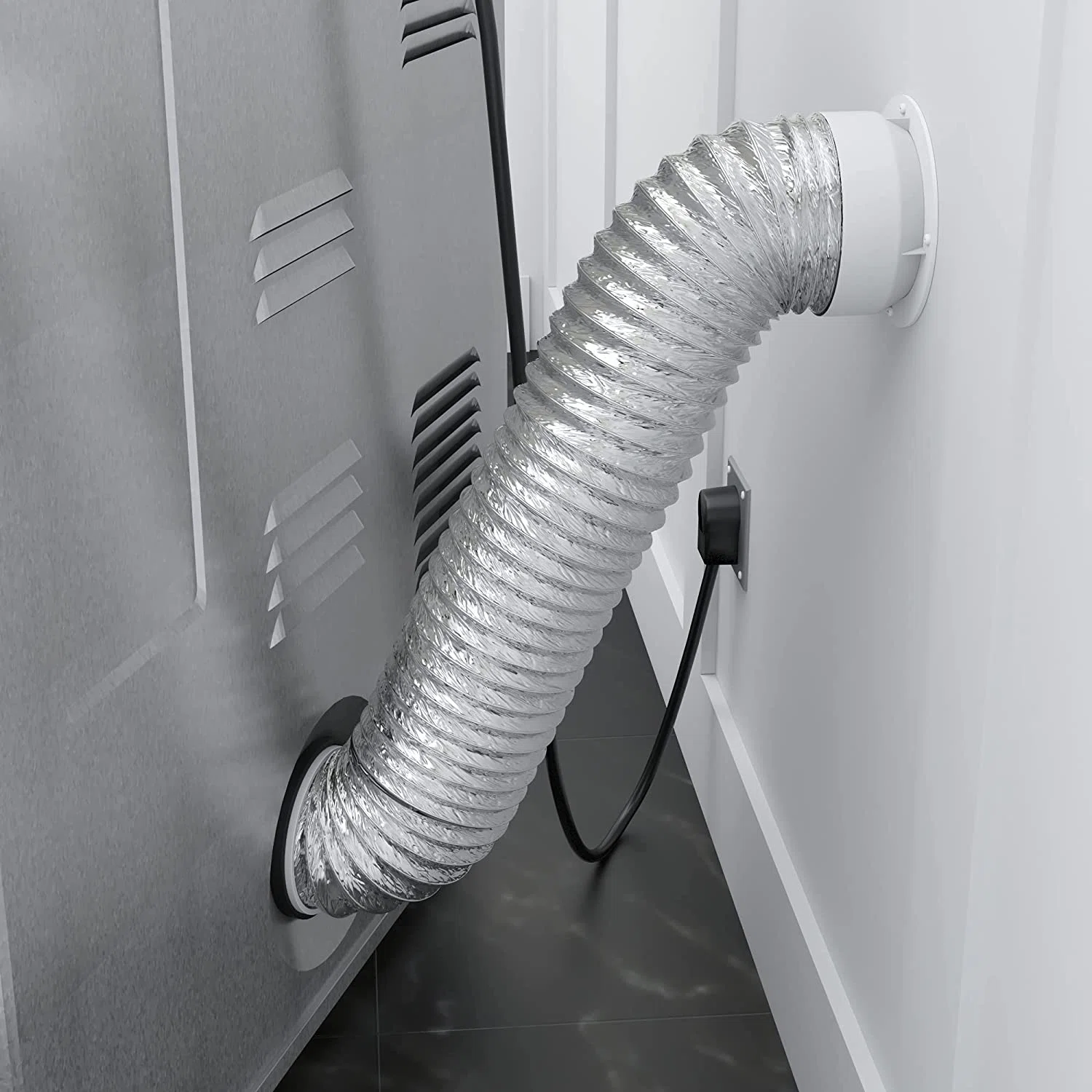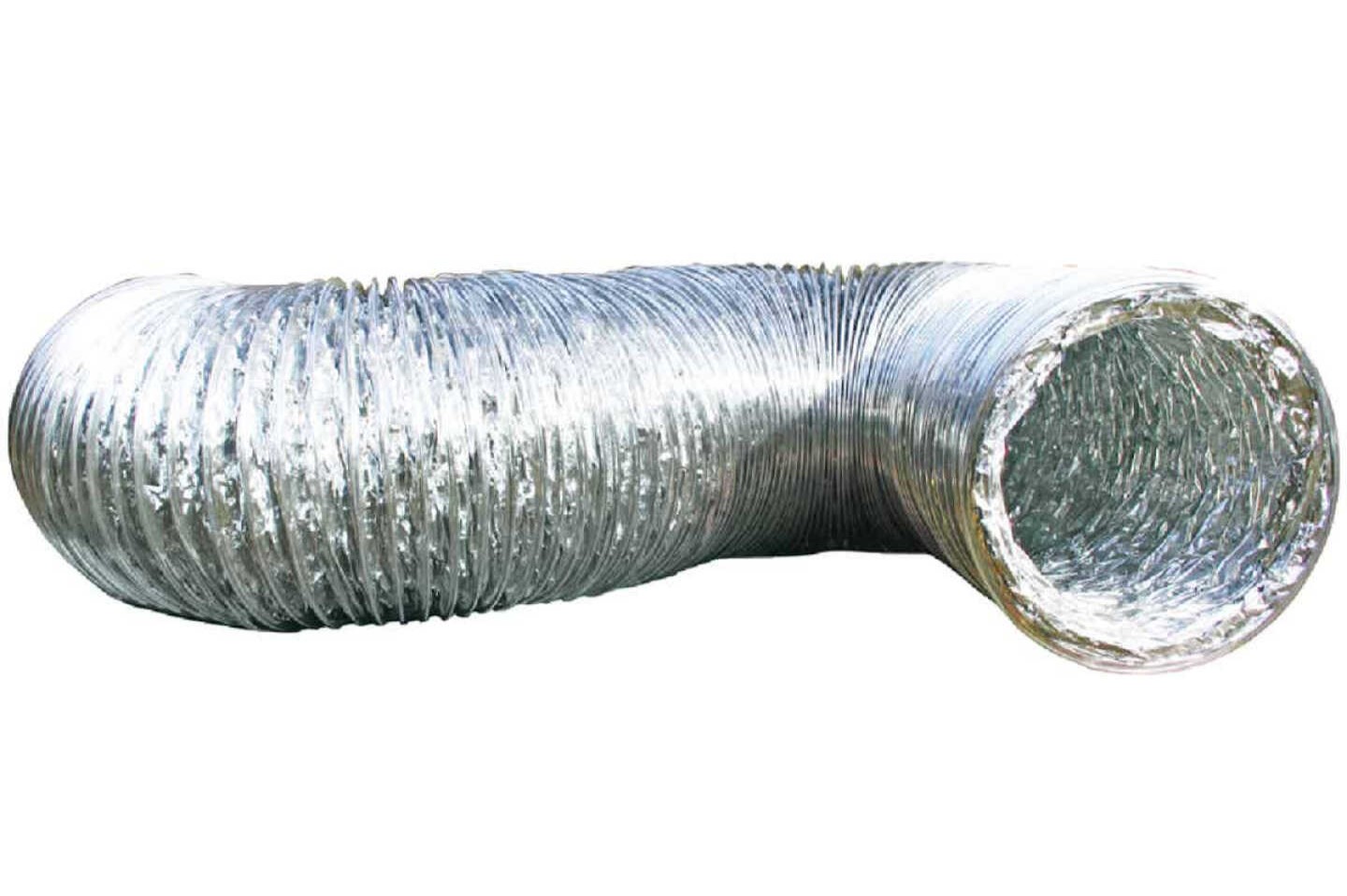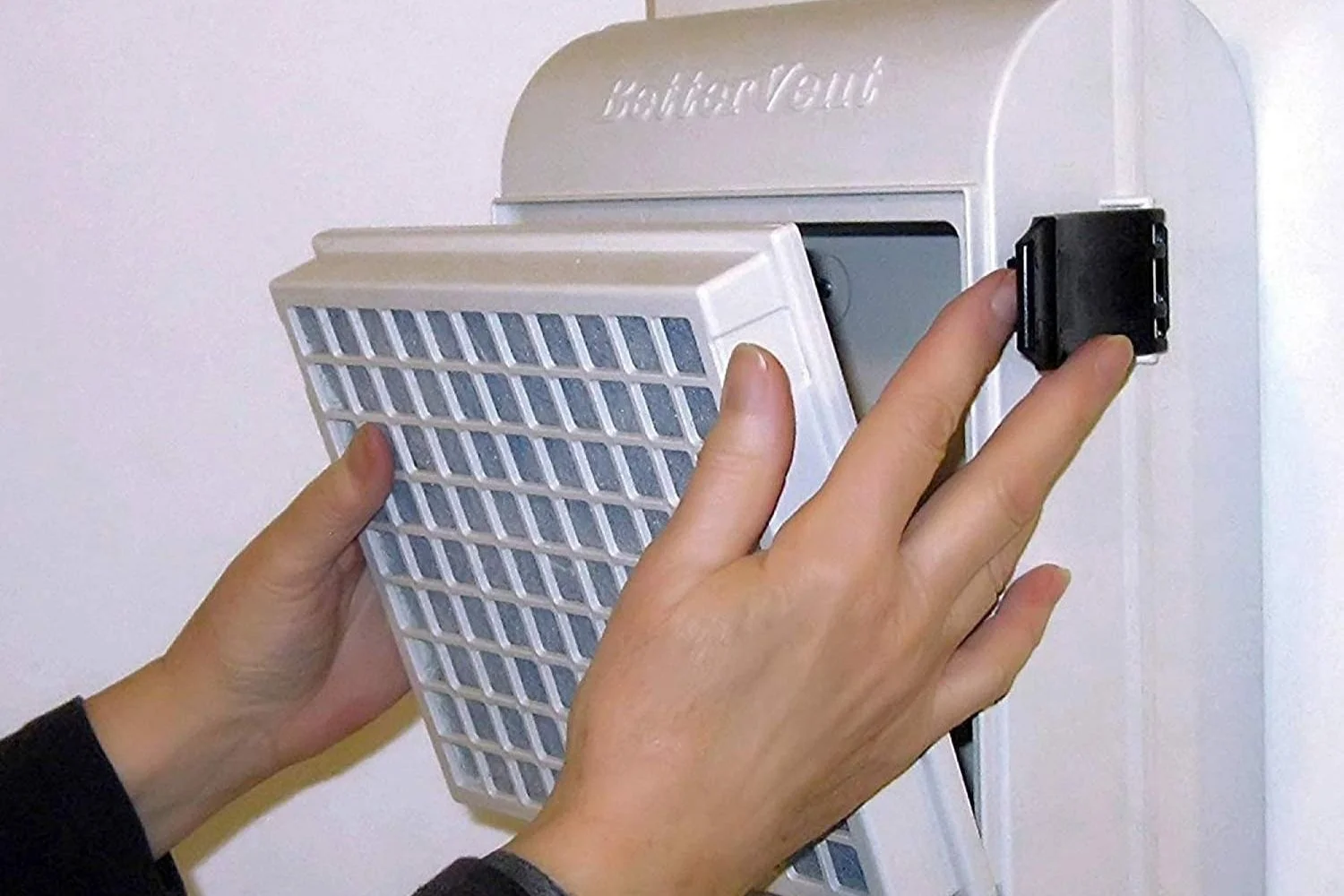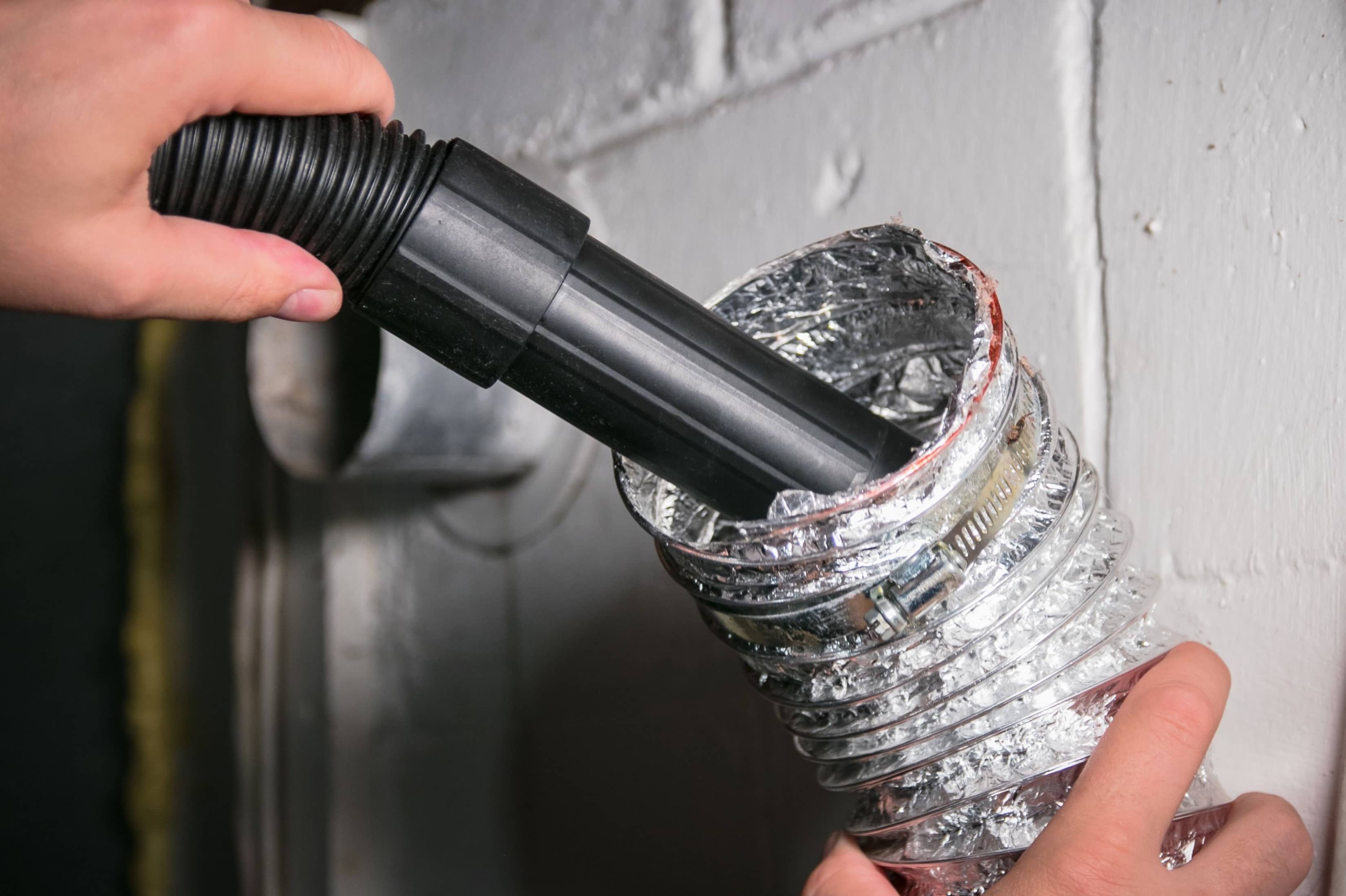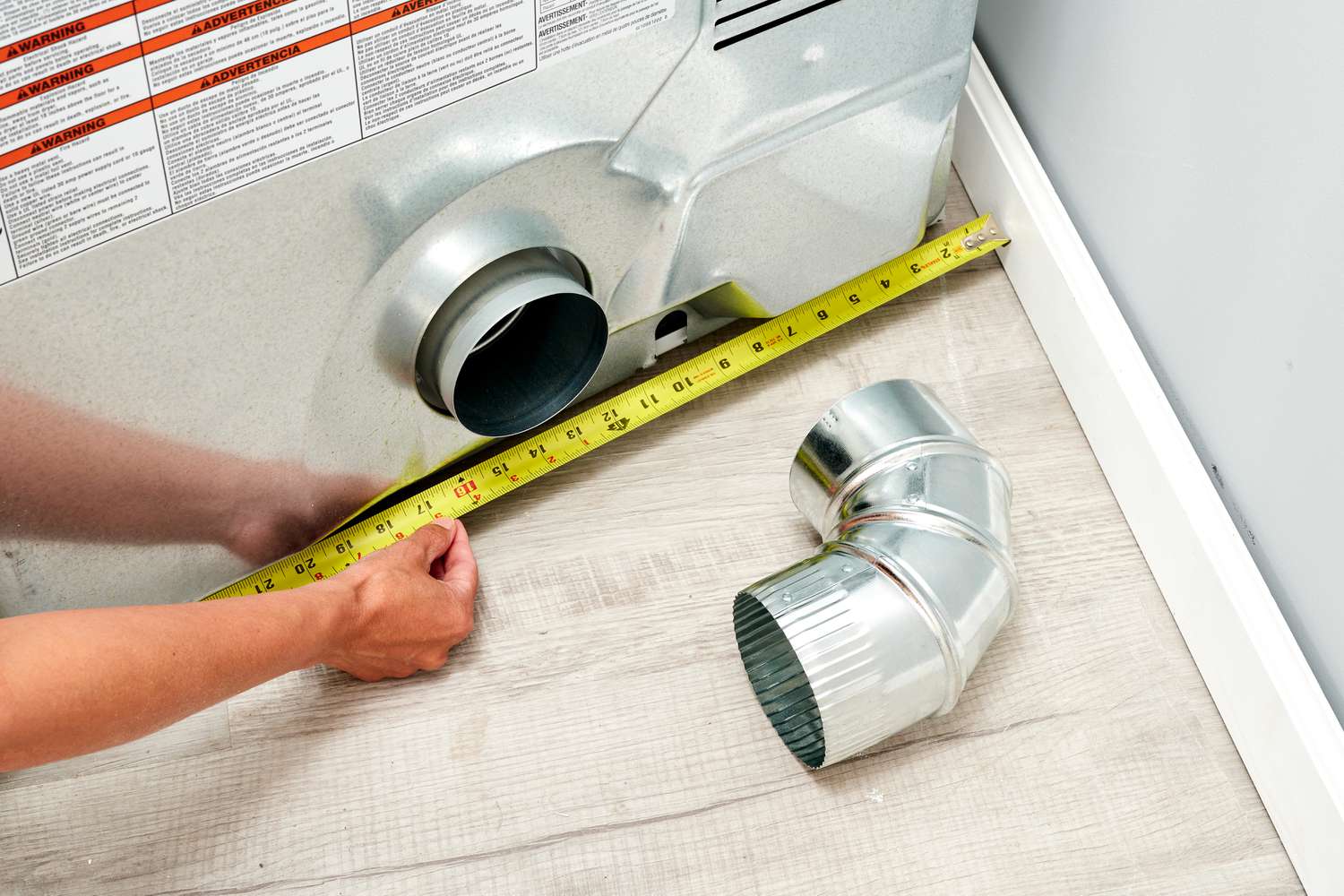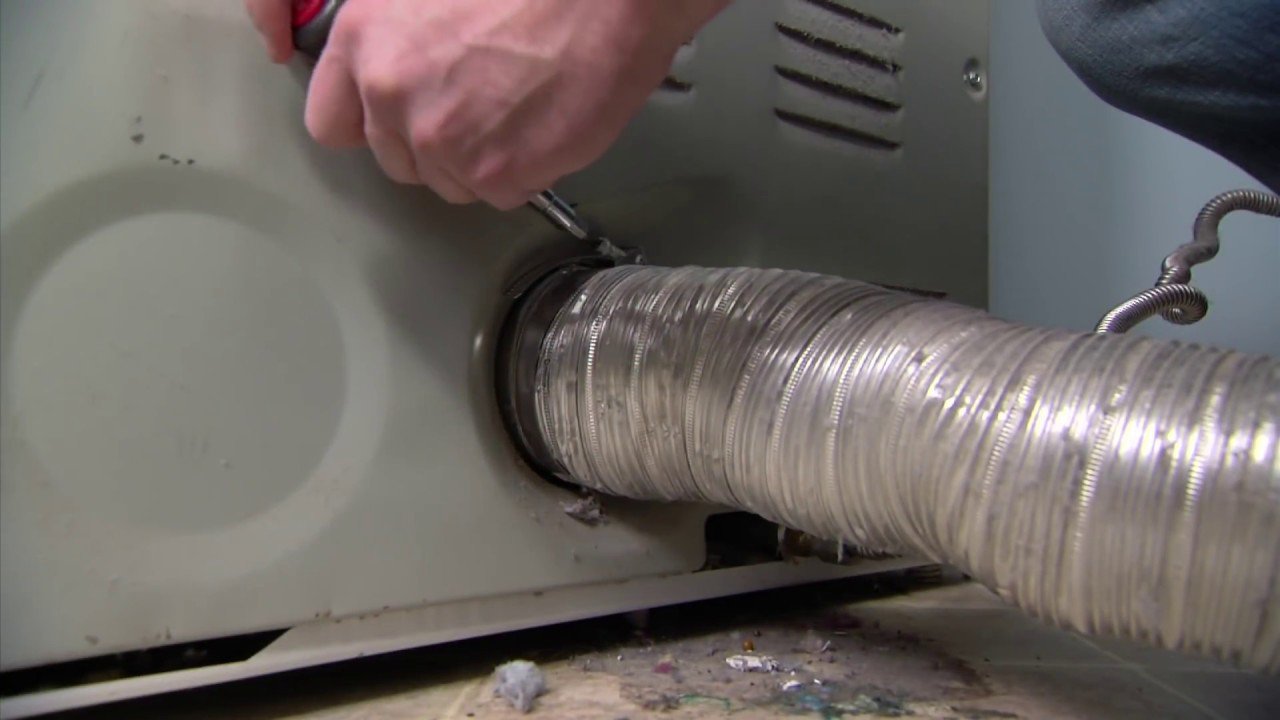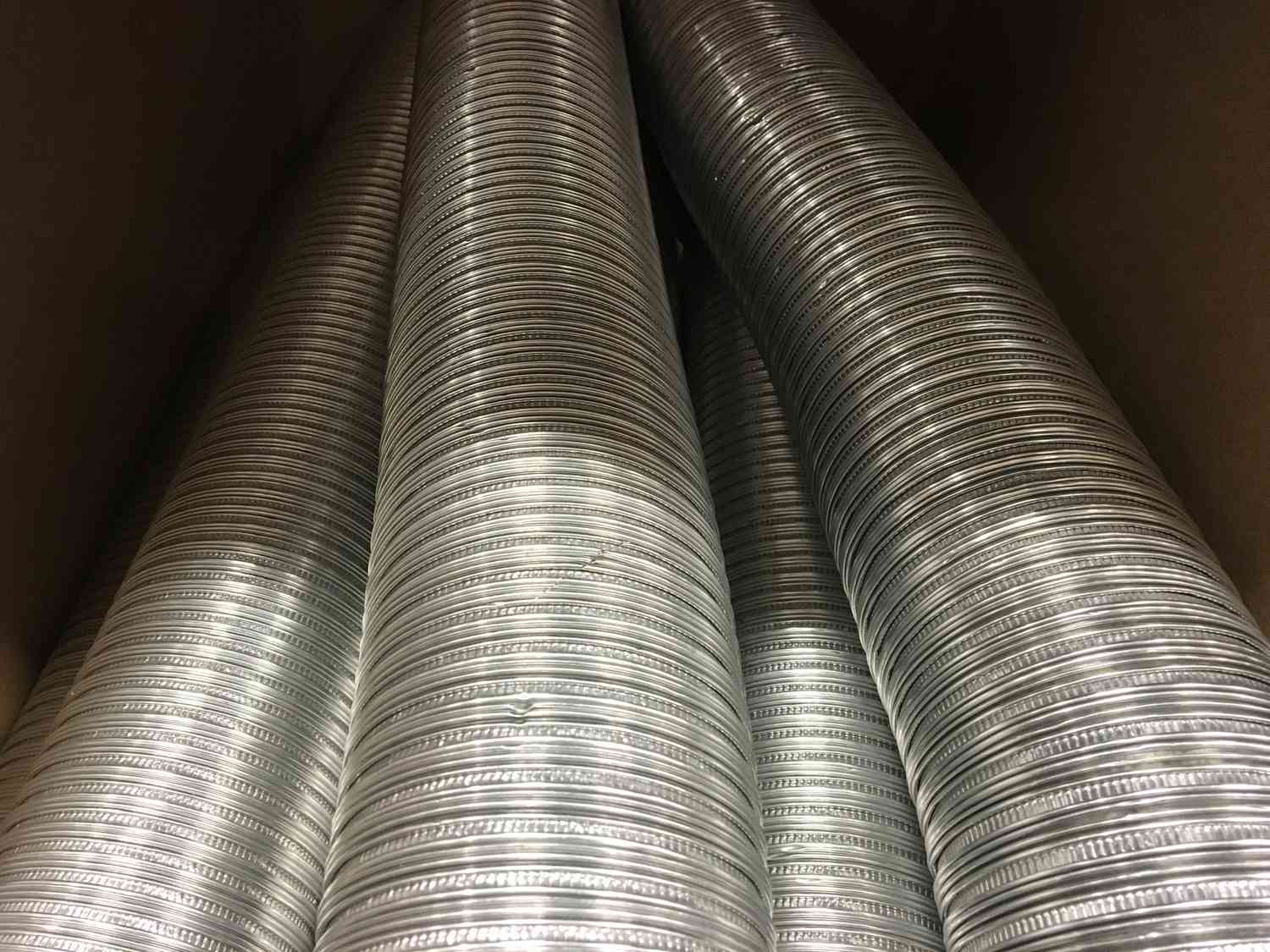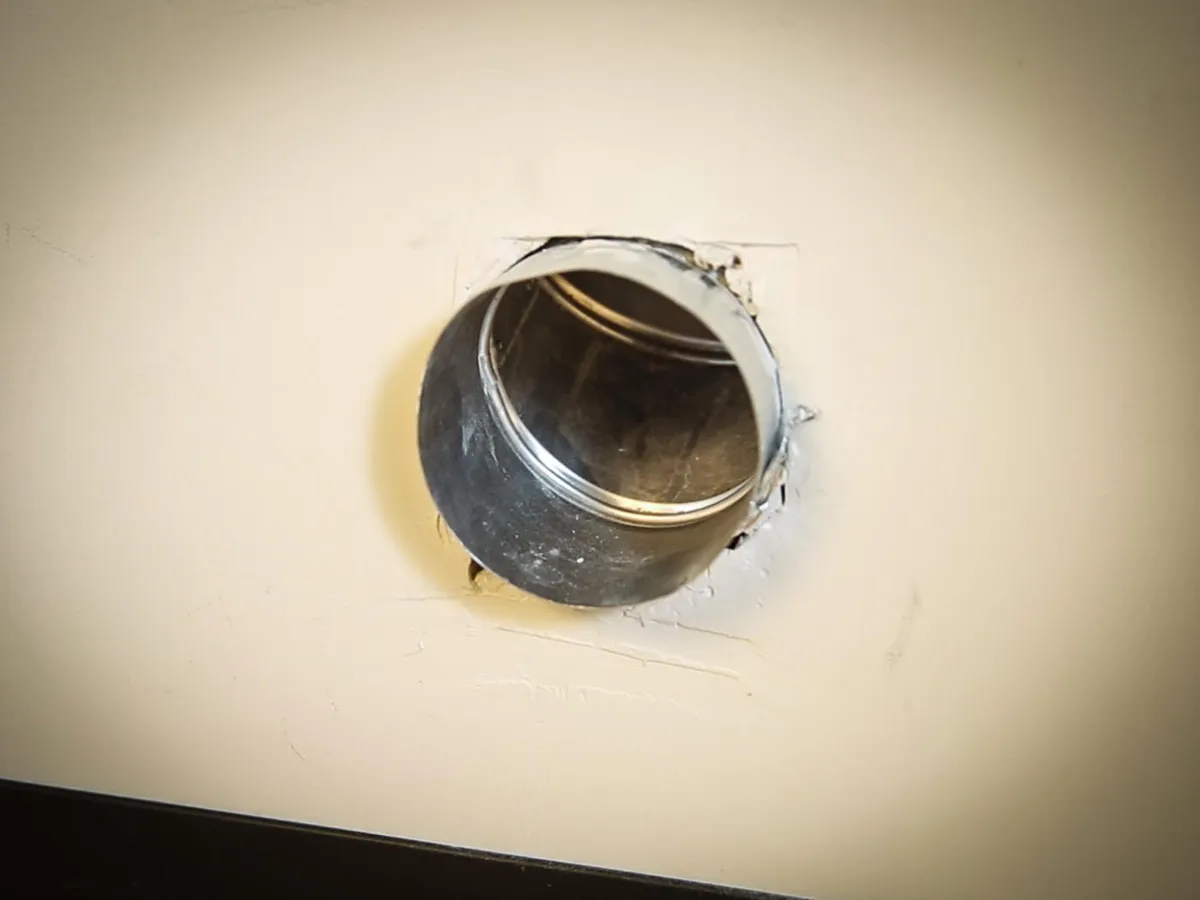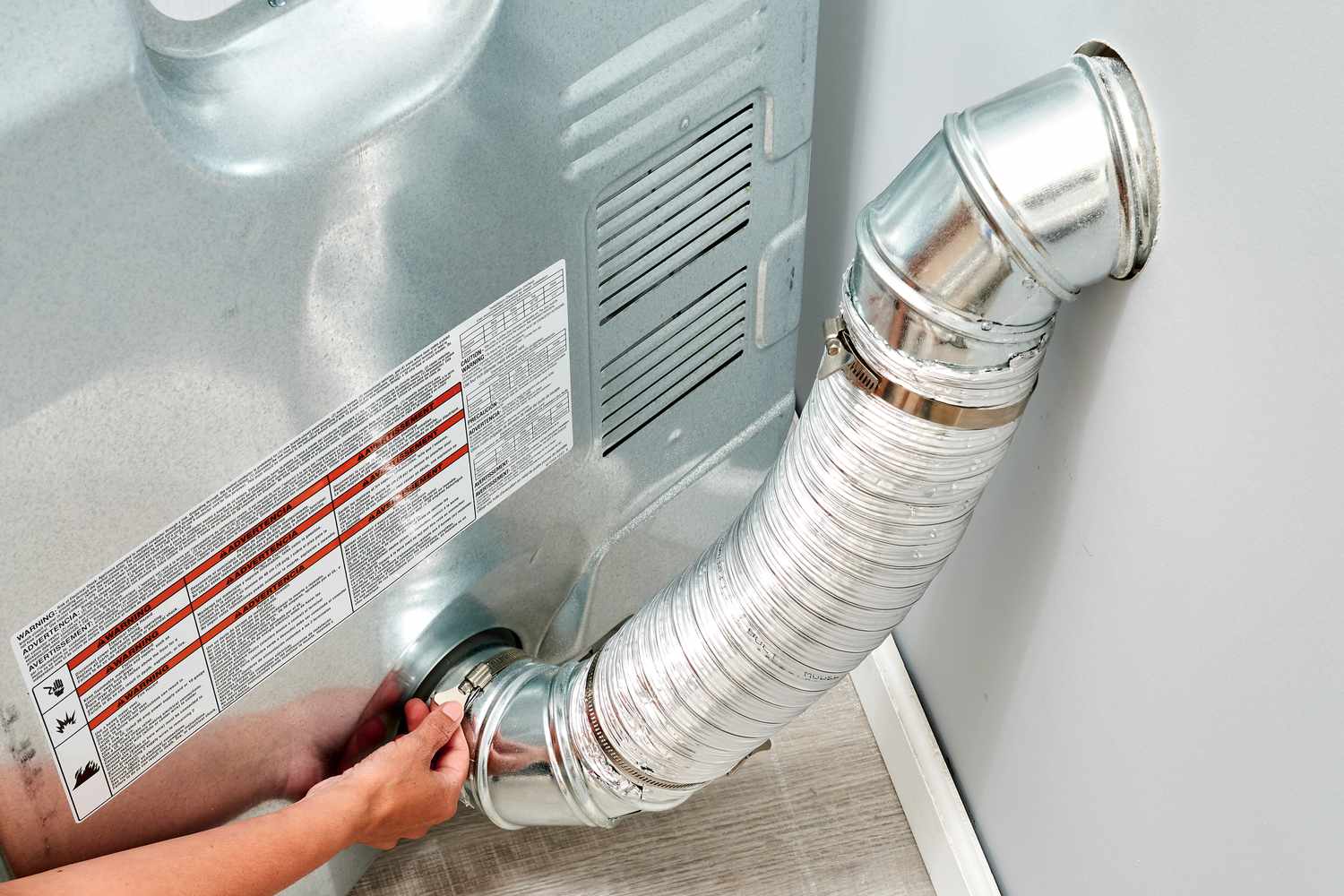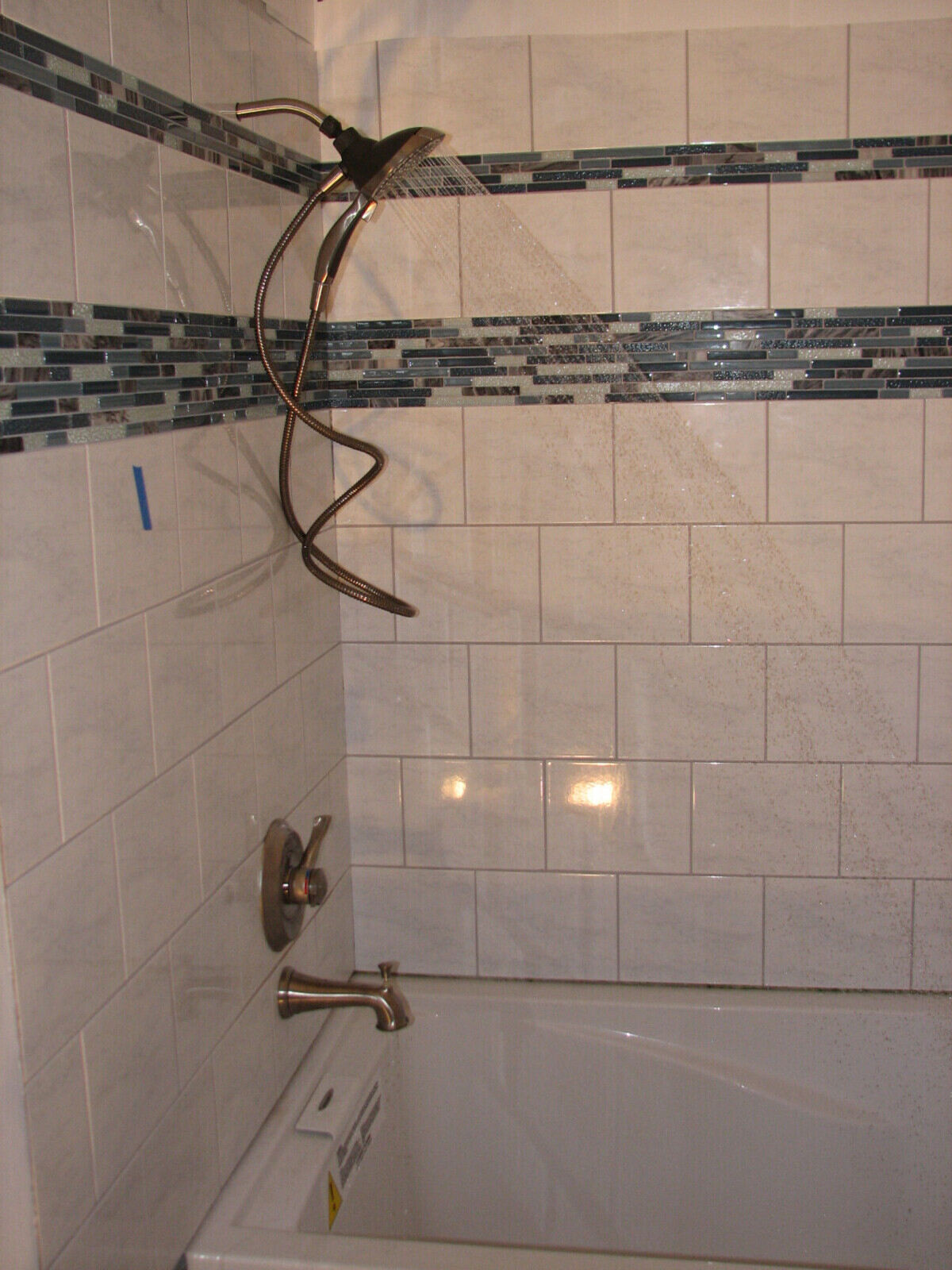Home>Home Maintenance>What Comes Out Of A Dryer Vent
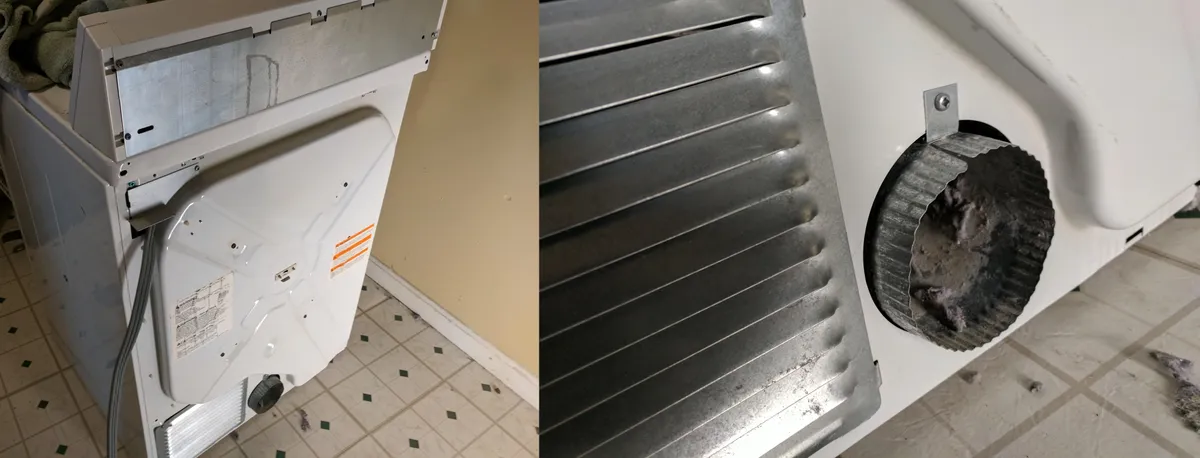

Home Maintenance
What Comes Out Of A Dryer Vent
Modified: March 6, 2024
Ensure a safe and well-maintained home by cleaning your dryer vent regularly. Find out what comes out of a dryer vent and why home maintenance is essential.
(Many of the links in this article redirect to a specific reviewed product. Your purchase of these products through affiliate links helps to generate commission for Storables.com, at no extra cost. Learn more)
Introduction
Welcome to our comprehensive guide on dryer vents! In this article, we will explore everything you need to know about dryer vents – from their purpose and importance to common issues and maintenance tips. Whether you are a homeowner looking to maintain your dryer efficiently or a professional seeking to expand your knowledge on home maintenance, this article is for you.
Dryer vents play a crucial role in the efficient operation of your dryer and the overall safety of your home. They are responsible for expelling hot air, moisture, and lint generated during the drying process. However, many homeowners underestimate the significance of properly maintaining their dryer vents, which can lead to a range of problems including reduced performance, energy inefficiency, and even fire hazards.
By understanding the importance of dryer vents and learning how to identify and address common issues, you can keep your dryer running smoothly and ensure the safety of your home and family.
In the following sections, we will delve into the ins and outs of dryer vents, exploring the reasons why proper ventilation is crucial, detecting issues with your dryer vents, and providing tips on how to maintain and clean them effectively. Additionally, we will discuss the pros and cons of DIY vent cleaning versus hiring a professional, as well as upgrading your dryer vent system for better performance and safety.
Before we dive into the details, it’s important to note that while this article provides valuable information and tips, it is always advisable to consult a professional if you encounter any serious issues with your dryer vent system. Safety should always be your top priority.
So, let’s get started with understanding the basics of dryer vents and why they are essential for your home’s maintenance and safety.
Key Takeaways:
- Regularly cleaning and maintaining your dryer vent is essential for efficient drying, energy savings, and preventing fire hazards. It’s important to inspect, clear blockages, and ensure proper airflow for a safe and effective dryer.
- Upgrading your dryer vent system can improve its performance and safety. Consider using rigid metal ducts, proper vent sizing, and professional installation for optimal efficiency and peace of mind.
Read more: Why Is Lint Coming Out Of The Dryer Vent
Understanding Dryer Vents
Dryer vents are an integral part of your home’s laundry system. They are responsible for allowing hot air, moisture, and lint to escape from your dryer and be safely expelled outside. Without proper ventilation, these byproducts can accumulate and cause a range of problems, including reduced drying efficiency, potential fire hazards, and even indoor air pollution.
Most dryer vents are made of flexible metal or rigid metal ducts and are typically located at the rear of the dryer. From there, they travel through the walls or ceilings of your home and exit outside, usually through a vent opening on the side of your house or through the roof.
The primary purpose of a dryer vent is to remove hot, humid air and lint from the dryer drum, allowing your clothes to dry effectively. As the dryer spins, it generates heat and moisture, which is then expelled through the vent. This ensures that your clothes dry quickly and prevents dampness from lingering in the dryer, which can lead to mold and mildew growth.
In addition to removing hot air and moisture, dryer vents also play a crucial role in removing lint. As clothes tumble and dry, they shed tiny fibers and particles. Most of this lint is captured by the dryer’s lint trap, but some inevitably escapes and is carried through the dryer vent. Without proper ventilation, lint can accumulate in the vent and restrict airflow, leading to reduced drying efficiency and potential fire hazards.
Properly installed and maintained dryer vents not only improve the performance of your dryer but also contribute to the overall safety and well-being of your home. A well-ventilated dryer reduces the risk of overheating, which can be a potential fire hazard. Additionally, by expelling moisture and lint outside, dryer vents help maintain good indoor air quality, preventing mold growth and reducing the risk of respiratory issues.
In the next section, we will discuss the importance of proper ventilation and why neglecting it can lead to serious problems. So, stay tuned to understand why maintaining your dryer vent system is essential for the longevity of your dryer and the safety of your home.
Importance of Proper Ventilation
Proper ventilation of your dryer is vital for several reasons. Neglecting to maintain your dryer vent system can have serious consequences, ranging from reduced drying efficiency to potential fire hazards. Let’s explore why ensuring proper ventilation is crucial for the longevity of your dryer and the safety of your home.
1. Efficient Drying: A well-ventilated dryer allows hot air and moisture to escape, creating an environment conducive to efficient drying. If the air is unable to circulate freely, it can lead to longer drying times, resulting in wasted energy and increased utility bills. Additionally, clothes that take longer to dry may become more wrinkled or even develop a musty odor.
2. Fire Safety: Lint is highly flammable, and when it accumulates in your dryer vent, it poses a significant fire hazard. According to the U.S. Fire Administration, failure to clean dryer vents is the leading cause of dryer fires. Lint buildup restricts airflow and can ignite, resulting in a potentially devastating fire. Regular cleaning and maintenance of your dryer vent can significantly reduce this risk by removing lint and ensuring proper airflow.
3. Energy Efficiency: When your dryer vent is clogged with lint or obstructed in any way, your dryer has to work harder to expel hot air and moisture. This increased workload leads to higher energy consumption and inefficiency. By keeping your dryer vent clean and properly maintained, you can optimize its performance and reduce energy waste.
4. Indoor Air Quality: A malfunctioning or poorly maintained dryer vent can lead to poor indoor air quality. When hot, humid air is unable to escape, it can create a breeding ground for mold and mildew growth. These allergens can negatively impact the air you breathe, potentially leading to respiratory issues for you and your family. By ensuring proper ventilation, you can remove moisture and prevent the growth of mold, improving the overall air quality in your home.
5. Extended Dryer Lifespan: Proper ventilation also plays a role in extending the lifespan of your dryer. When your dryer is not overworked and has good airflow, it experiences less strain, reducing the likelihood of breakdowns and malfunctions. Regularly cleaning and maintaining your dryer vent can help prolong the life of your dryer and save you money on expensive repairs or replacements.
It’s clear that proper ventilation of your dryer is essential. In the next section, we will discuss how to detect issues with your dryer vent and when it’s time to take action. So, keep reading to learn how to identify common problems and safeguard your home and dryer from potential hazards.
Detecting Issues with Dryer Vents
Dryer vents require regular inspection to identify any potential issues that may be affecting their performance or safety. By being proactive and attentive, you can catch problems early on and address them before they lead to more significant damage. Here are some common signs that indicate potential issues with your dryer vent:
- Long Drying Times: If your clothes are taking longer than usual to dry, it could be a sign of a clogged or blocked dryer vent. Reduced airflow can prevent hot air from properly circulating, resulting in extended drying times.
- Excessive Lint: When you notice an excessive amount of lint around your dryer or on your clothes, it may indicate a problem with your vent. Lint buildup inside your dryer or around the vent opening is a sign that lint is not being properly expelled and is accumulating in the system.
- Burning Smell: A burning smell coming from your dryer or laundry area should never be ignored. It could be an indication that lint has caught fire or that there is a blockage in the ventilation system. In either case, it is crucial to immediately address the issue to prevent a potential house fire.
- Increase in Energy Bills: If you notice a significant increase in your energy bills without any other apparent cause, it could be due to a poorly functioning dryer vent. When airflow is restricted, your dryer has to work harder and consume more energy to dry your clothes effectively.
- Hot Dryer or Laundry Area: Excessive heat buildup around your dryer or in the laundry area itself can indicate a problem with ventilation. A properly functioning vent should expel hot air outside, preventing it from lingering and causing discomfort or potential hazards.
- Lint Outside the Vent Opening: During regular inspection, if you notice lint accumulating near the vent opening on the exterior of your home, it suggests that lint is not being properly expelled and is escaping through gaps in the vent system.
If you observe any of the above signs, it’s essential to take immediate action to address the issue. Ignoring problems with your dryer vent can lead to reduced performance, increased energy consumption, and fire hazards. Regular inspection and maintenance can help prevent such problems and ensure the safe and efficient operation of your dryer.
In the next section, we will discuss common problems that can occur with dryer vents and provide tips on how to tackle them effectively. So, stay tuned to learn more about maintaining your dryer vent system.
Common Problems with Dryer Vents
Like any other part of your home, dryer vents can encounter various issues that affect their performance and safety. Understanding these common problems is crucial for timely detection and resolution. Let’s take a closer look at some of the most frequent issues that can occur with dryer vents:
- Lint Buildup: One of the most prevalent problems is the accumulation of lint within the vent system. Lint is a byproduct of drying clothes and can build up over time if not properly expelled. Excessive lint can lead to reduced airflow, longer drying times, and increased fire hazards. Regular cleaning and maintenance are essential to prevent lint buildup.
- Blockages: Dryer vents can become blocked due to a variety of reasons, including the presence of debris, bird nests, or even small animals. Blockages restrict airflow and can cause overheating, longer drying times, and potential fire hazards. Regular inspection and cleaning can help identify and clear any obstructions.
- Damaged or Disconnected Vent Hose: The vent hose that connects the dryer to the vent opening can become damaged or disconnected over time. This can lead to leaks, air leakage, or lint escaping into the laundry area. Inspect the vent hose regularly and ensure it is securely connected to both the dryer and the vent opening.
- Inadequate Vent Size or Design: The size and design of the vent system play a crucial role in its performance. If the vent is too small or improperly designed, it can lead to reduced airflow and increased lint buildup. Inadequate ventilation can also cause excess heat and moisture to linger in the dryer, increasing the risk of mold or mildew growth.
- Damaged Vent Cover: The vent opening on the exterior of your home is susceptible to damage from weather conditions, debris, or accidents. A damaged vent cover can allow pests, debris, or even water to enter the vent system, causing blockages and other issues. Regularly inspect and replace damaged vent covers as needed.
- Poor Vent Routing: The routing of the dryer vent should be as direct and short as possible. If the vent has excessive bends, twists, or unnecessarily long sections, it can impede airflow and increase the chances of lint buildup. Consider re-routing the vent if it has poor design or if it is not up to code.
It’s important to address these problems promptly to ensure the safe and efficient operation of your dryer. Regular maintenance, including cleaning, inspecting, and repairing any issues, will go a long way in preventing these common vent problems. However, in some instances, it might be necessary to seek professional assistance to ensure the proper resolution of the issue.
In the next section, we will discuss the importance of cleaning and maintaining dryer vents and provide tips for DIY cleaning versus hiring a professional. So, keep reading to learn more about keeping your dryer vent system in optimal condition.
Regularly clean your dryer vent to prevent lint buildup, which can lead to reduced efficiency and even pose a fire hazard. Use a vent brush or vacuum to remove lint and debris.
Read more: What Is A Dryer Vent
Cleaning and Maintenance of Dryer Vents
Regular cleaning and maintenance of your dryer vents are essential for optimal performance, energy efficiency, and safety. By keeping your vent system clear of lint and other obstructions, you can prevent issues such as reduced airflow, longer drying times, and potential fire hazards. Here are some tips for cleaning and maintaining your dryer vents:
- Lint Trap Cleaning: Start by cleaning the lint trap after every load of laundry. Remove any lint buildup from the trap to prevent it from entering the vent system. This simple step can significantly reduce the amount of lint that reaches the vent.
- Regular Vent Inspection: Inspect your dryer vent system regularly to check for any signs of damage, blockages, or excessive lint. This includes inspecting the vent hose, vent cover, and the area surrounding the vent opening. Address any issues promptly to ensure proper airflow and prevent potential hazards.
- Clearing Blockages: If you notice any blockages in your vent system, such as debris, nests, or lint buildup, it’s important to clear them to restore proper airflow. Use a vent brush or vacuum cleaner with a long attachment to carefully remove any obstructions. Avoid using sharp objects that could damage the vent.
- Professional Cleaning: Consider hiring a professional dryer vent cleaner for a thorough cleaning at least once a year, especially if you have a long or complex vent system. Professionals have specialized equipment and expertise to remove deep-seated lint and ensure the complete clearance of the vent.
- Dryer Vent Kit: Invest in a dryer vent cleaning kit that includes brushes and extendable rods. These kits are readily available and allow you to clean your dryer vent from the inside out. Follow the instructions carefully to ensure effective and safe cleaning.
- Ventilation Improvement: If you notice that your dryer vent system is not performing optimally, consider upgrading to a more efficient vent design or size. Consult a professional to help you determine the best ventilation solution for your specific needs.
Remember that safety should always be a priority when cleaning and maintaining your dryer vents. Before performing any maintenance, ensure that the dryer is unplugged or disconnected from the power supply. If you are not confident in your abilities or encounter any significant issues, it is best to seek professional assistance.
By following these cleaning and maintenance practices, you can keep your dryer vent system in optimal condition, improve its efficiency, and reduce the risk of fire hazards. In the next section, we will discuss the pros and cons of DIY vent cleaning versus hiring a professional, helping you make an informed decision about the best approach for your situation.
DIY vs. Professional Dryer Vent Cleaning
When it comes to cleaning your dryer vent, you have the option to either tackle the task yourself or hire a professional vent cleaner. Both approaches have their advantages and considerations. Let’s explore the pros and cons of DIY vent cleaning versus hiring a professional:
- Cost: DIY vent cleaning is typically more cost-effective, as you won’t have to pay for professional services. However, keep in mind that purchasing vent cleaning tools or kits may incur some initial expenses. On the other hand, hiring a professional vent cleaner involves paying a fee for their expertise and equipment.
- Efficiency: While DIY vent cleaning can be effective in removing surface-level lint, professional cleaners have the experience and specialized equipment to perform a thorough and deep clean. They can target hard-to-reach areas and ensure optimal vent clearance for improved performance and safety.
- Time and Effort: DIY vent cleaning can be time-consuming, especially if you have a long or complex vent system. It requires physical effort and the use of appropriate tools to properly clean the vent. Hiring a professional vent cleaner can save you time and effort, as they can efficiently complete the task for you.
- Safety: Vent cleaning can involve climbing ladders, handling tools, and working in tight spaces. If you’re not comfortable or experienced in these activities, DIY vent cleaning may pose safety risks. Professionals, on the other hand, are trained to perform the task safely, reducing the risk of accidents or injuries.
- Thoroughness: While DIY vent cleaning can help remove surface-level lint, it may not address deep-seated lint or other blockages effectively. Professional vent cleaners use high-powered vacuums and specialized tools that can provide a more thorough cleaning, ensuring proper airflow and reducing potential hazards.
- Knowledge and Expertise: Vent cleaning professionals have the knowledge and expertise to properly assess and diagnose any issues with your vent system. They can detect problems that you may overlook and provide recommendations for necessary repairs or improvements.
Ultimately, the choice between DIY vent cleaning and hiring a professional depends on your comfort level, available time, budget, and the complexity of your vent system. If you have a short and straightforward vent system, DIY cleaning may be sufficient. However, for longer or more intricate systems, or if you lack the necessary tools or experience, it might be wise to enlist the help of a professional vent cleaner.
Regardless of whether you choose to clean your dryer vent yourself or hire a professional, regular maintenance is vital. Cleaning should be done at least once a year, or more frequently if you notice signs of lint buildup or reduced performance.
In the next section, we will discuss upgrading your dryer vent system for improved performance and safety. So, keep reading to learn about the considerations when considering a vent system upgrade.
Upgrading Your Dryer Vent System
If you’re looking to improve the performance, efficiency, and safety of your dryer, upgrading your vent system can be a worthwhile investment. Upgrading your dryer vent system involves replacing old or inadequate components with newer, more efficient ones. Here are some considerations to keep in mind when upgrading your dryer vent system:
- Vent Material: Consider using rigid metal ducts instead of flexible ones. Rigid ducts have smoother interior surfaces that promote better airflow, reducing the chances of lint buildup and improving drying efficiency.
- Vent Size: Ensure that your dryer vent is sized correctly for your specific dryer model. A vent that is too small can lead to restricted airflow, while an oversized vent can result in inefficient drying. Consult the manufacturer’s guidelines or seek professional advice to determine the optimal vent size.
- Vent Routing: Reevaluate the routing of your vent system to ensure the most direct and efficient path for airflow. Minimize the number of bends and turns, as they can restrict airflow and increase the likelihood of lint accumulation. Straighter vent runs allow for better performance and easier maintenance.
- Vent Covers: Upgrade your vent cover to one that has a built-in lint trap or a bird/rodent guard. These covers can help prevent lint buildup and the entry of pests into your vent system, improving both airflow and safety.
- Consider Dryer Vent Booster Fan: If your dryer vent has a long or complex route that hinders proper airflow, a dryer vent booster fan can help improve ventilation. These fans increase airflow, reducing drying time and preventing lint buildup. Consult a professional to determine if a booster fan is necessary for your specific vent system.
- Professional Installation: For complex vent system upgrades or if you lack the necessary skills, consider hiring a professional for the installation. They have the expertise to assess your needs accurately and ensure that the new vent system is installed correctly for optimal performance and safety.
Upgrading your dryer vent system can enhance the efficiency and safety of your dryer, ultimately saving you time, energy, and potential repair costs. It is important to assess your specific needs and consult professionals if necessary to make informed decisions about your vent system upgrade.
Remember to regularly inspect and maintain your upgraded vent system to keep it in optimal condition. This includes cleaning the vent, checking for any obstructions or damage, and addressing issues promptly.
In the following section, we will discuss important safety precautions to keep in mind when dealing with dryer vents. So, read on to learn how to ensure the safety of your home and family.
Safety Precautions for Dryer Vents
Ensuring the safety of your home and family is paramount when dealing with dryer vents. While regular cleaning and maintenance are crucial, it’s important to follow specific safety precautions to minimize the risk of accidents and maintain a safe environment. Here are some important safety measures to keep in mind:
- Disconnect Power: Before conducting any maintenance or cleaning on your dryer vent, make sure to disconnect the power supply to the dryer. Unplug the dryer from the electrical outlet or shut off the appropriate circuit breaker.
- Use Proper Tools: When cleaning or inspecting the dryer vent, use the appropriate tools for the job. This may include a vent brush, vacuum cleaner with a long attachment, or a dryer vent cleaning kit. Avoid using sharp objects or tools that may damage the vent or the dryer components.
- Protective Gear: Wear appropriate protective gear such as gloves and safety goggles to safeguard yourself during cleaning and maintenance tasks. This will protect you from dust, debris, and potential contact with sharp edges or contaminants.
- Avoid Chemicals: Do not use chemicals or flammable materials to clean your dryer vent. Lint is highly flammable, and using chemicals may pose a fire risk. Stick to mechanical cleaning methods and avoid anything that could cause a chemical reaction.
- Proper Ventilation: Ensure that your laundry area is well-ventilated when operating the dryer. This will help prevent the buildup of heat and moisture, reducing the risk of mold development or fire hazards.
- Keep Combustibles Away: Keep flammable materials, such as cleaning supplies or piles of lint, away from the dryer and vent area. These materials can ignite easily, posing a fire risk.
- Regular Inspections: Regularly inspect your dryer vent system for any signs of damage, blockages, or excessive lint buildup. Address any issues promptly to prevent potential hazards and ensure the safe and efficient operation of your dryer.
- Carbon Monoxide Detectors: Install carbon monoxide detectors in your home, especially near the laundry area. Although dryer vents primarily expel lint and moisture, there is a possibility of carbon monoxide leaking if your dryer is fueled by natural gas or propane.
- Professional Assistance: If you’re uncertain about conducting dryer vent maintenance or encounter significant issues, seek professional assistance. Professionals have the expertise, experience, and equipment to handle complex vent systems safely and effectively.
Following these safety precautions will help minimize the risk of accidents, ensure the safe operation of your dryer, and protect the well-being of your home and family.
Now that we have covered essential safety measures, let’s conclude our comprehensive guide on dryer vents in the next section.
Read more: How To Get Birds Out Of A Dryer Vent
Conclusion
Maintaining proper ventilation in your dryer vent system is crucial for efficient drying, energy efficiency, and most importantly, the safety of your home and family. By understanding the importance of dryer vents and taking proactive measures to clean and maintain them, you can avoid issues such as reduced performance, increased energy consumption, and potential fire hazards.
In this comprehensive guide, we have explored the basics of dryer vents, including their purpose, importance, and common problems that can arise. We have discussed the significance of proper ventilation and the dangers of neglecting vent maintenance. We have also provided tips on the detection of issues with dryer vents and the necessary steps to address them promptly.
Moreover, we have covered the important aspects of cleaning and maintenance, discussing the pros and cons of DIY vent cleaning versus hiring a professional. We have emphasized the significance of regular inspection, clearing blockages, and ensuring optimum airflow and ventilation.
Furthermore, we have touched on the topic of upgrading your dryer vent system, including considerations such as vent material, size, and routing. We have highlighted the benefits of professional installation and provided guidance on enhancing the performance and safety of your dryer.
Lastly, we have emphasized the importance of taking safety precautions when dealing with dryer vents. By following proper procedures, using appropriate tools, and maintaining proper ventilation, you can minimize the risk of accidents and ensure a safe environment for your home.
Remember, while this guide provides valuable information, it’s always advisable to consult professionals for any significant issues or concerns with your dryer vent system. They have the expertise and knowledge to assess your specific situation and provide the most appropriate solutions.
By incorporating the knowledge and practices outlined in this guide, you can keep your dryer vent system in optimal condition, enhance its efficiency, and enjoy peace of mind knowing that you are providing a safe environment for your home and loved ones.
Thank you for joining us on this journey to understand and maintain your dryer vents. Stay proactive, stay safe, and enjoy the efficient performance of your dryer!
Frequently Asked Questions about What Comes Out Of A Dryer Vent
Was this page helpful?
At Storables.com, we guarantee accurate and reliable information. Our content, validated by Expert Board Contributors, is crafted following stringent Editorial Policies. We're committed to providing you with well-researched, expert-backed insights for all your informational needs.
